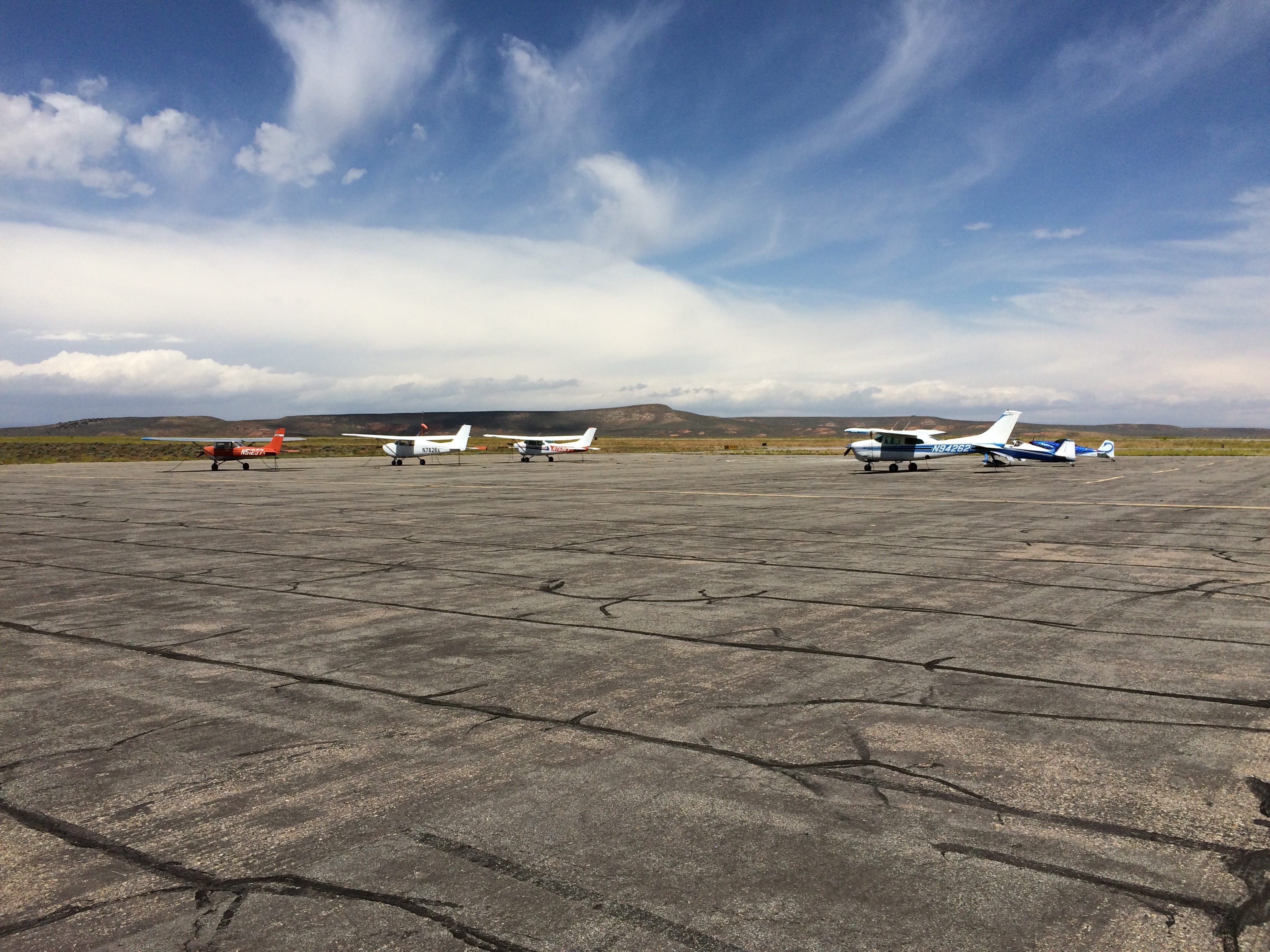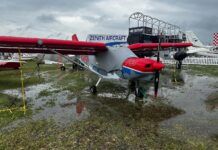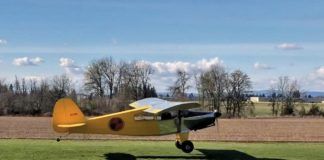 We were on our way back from Oshkosh a few weeks ago, headed from Minnesota to Western Nevada in one day. The forecast was for big winds in Wyoming, but dying off as we moved into Utah and Nevada. My wife and I had two different planes and while we weren’t really in formation, we were closely matched that we were usually within about five to ten miles of each other, so worked the navigation and weather problems as if we were in the same cockpit. Having topped off fuel in Hot Springs, South Dakota, we should have had plenty of fuel to reach our favorite little nearly-abandoned self-serve pump in Wells, Nevada.
We were on our way back from Oshkosh a few weeks ago, headed from Minnesota to Western Nevada in one day. The forecast was for big winds in Wyoming, but dying off as we moved into Utah and Nevada. My wife and I had two different planes and while we weren’t really in formation, we were closely matched that we were usually within about five to ten miles of each other, so worked the navigation and weather problems as if we were in the same cockpit. Having topped off fuel in Hot Springs, South Dakota, we should have had plenty of fuel to reach our favorite little nearly-abandoned self-serve pump in Wells, Nevada.
Unfortunately, the winds in western Wyoming were being kicked up by a the tail of a cold front draping from Canada down into the Salt Lake area – and as the morning grew late, the front was kicking up convective weather that did not look very inviting on NEXRAD. It didn’t make any difference if we looked on XM or ADS-B – it told us we really should stay away until it dissipated. Initially targeting for Brigham City, Utah, we realized when we passed Casper that really wasn’t going to work – the ceilings there were thickening, coinciding in altitude with the ridge-tops we had to cross to get there. And the rain echoes were moving in quickly. – not to mention – the winds were gusting to nearly 30 knots across the runway.

Ahh – the luxury of in-cockpit weather! “Take a look at Evanston – it’s on I-80, and the runway looks to be tending the same direction of the winds,” I transmitted on our air-to-air frequency. “That doesn’t take us too far out of the way, and we could sit down for lunch – see what the weather does.”
“OK,” Louise transmitted back – “I am still looking for it – what’s the wind speed there now?”
Uh…it’s straight down runway 23 at 230 degrees… 28, Gusting to 38. There was a moment of silence before I heard back. “OK – you’ve got the lead – I’ll watch you land first!”
Two tail draggers, wandering in the wind – fortunately, we live in the wind, and the gust factor wasn’t too bad. When it’s that windy, it is hard for the direction to change- but landing in that kind of blow brings its own unique illusions. With a normal landing speed of about 60, the ground speed looks ridiculously slow – dangerously slow, in fact, that leads you to ad more power and fly faster – but then you can’t really get the airplane to land. Added to the fact that Evanston’s beautiful runway is set on a butte above town, and you are hovering in to land on what looks like a long aircraft carrier. Best to focus on the numbers, fly a good AoA, and just use power to go where you want. Louise made it in just behind me and remarked on the same illusions – she spent a lot of time flying in Carlsbad, NM – the winds there are rarely below 30, but at least they have five different runways to choose from.
It really wasn’t all that bad, to be honest. As I taxied up to the gas pump, the attendant was there with a set of chocks, and I held the brakes after shutdown, until he had the airplane secured – no use risking blowing away down the ramp after surviving a landing like that…













